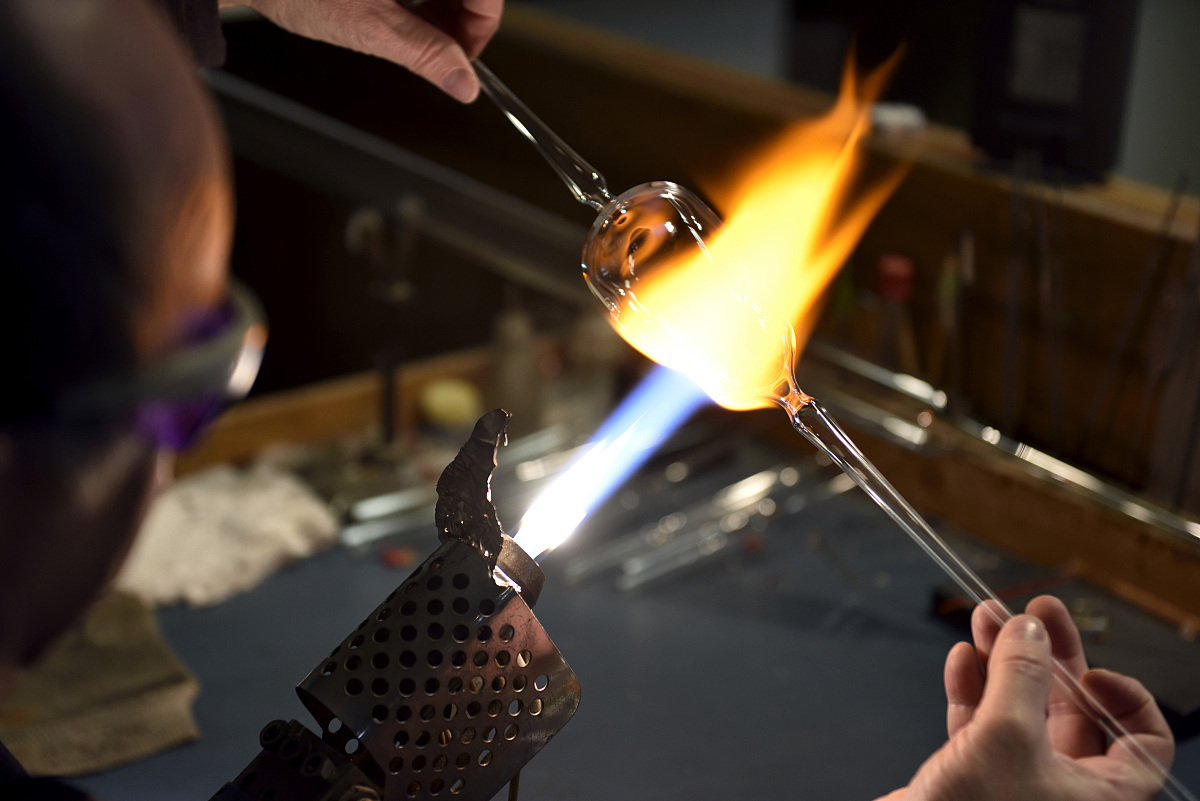
Privacy statement: Your privacy is very important to Us. Our company promises not to disclose your personal information to any external company with out your explicit permission.
Homogenization competition refers to the phenomenon where different brands of the same product category imitate each other in terms of performance, appearance, and even marketing methods, resulting in gradual convergence. This phenomenon leads to convergent competitive behaviors and is not conducive to consumers' identification of the characteristics of the products. Products are subject to one-dimensional competition, customer satisfaction is multi-dimensional competition, and product satisfaction is also for customer service. Homogenization competition is essentially a competition of customer satisfaction.
Recently, the author visited many glass manufacturing enterprises and market customers. During the communication, the most frequently mentioned topic was the increasingly fierce homogenization competition within the industry: "Products in mature markets will tend to become increasingly homogeneous. During the life cycle of a product, there will be innovation followed by homogenization, then innovation again and homogenization again. The market is constantly innovating. Traditional industries have difficulty achieving innovations that their competitors cannot surpass. The advantage of innovation will not last for a long time." Based on the current industry situation and future trends, the author suggests that glassware enterprises should pay attention to the following strategies:
1. Reconstructing production efficiency and product quality
The traditional domestic glass industry relies on manual labor, resulting in low production efficiency and unstable quality rate. The introduction of industrial robots and fully automated intelligent production lines can cover the entire process from ingredient mixing, molding, annealing to packaging, enabling precise operations in high-temperature environments. For instance, high-temperature sorting robots combined with machine vision technology can replace manual labor to complete sorting tasks in an environment of 200°C to 300°C, reducing product defect rates. Digitalization and process optimization can simulate production processes through digital twin technology, optimize process parameters, and shorten the research and development cycle. For example, industrial clusters in Fengyang, Anhui Province and Qixian, Shanxi Province have upgraded their equipment with full intelligent technology to promote product development towards more transparent, smooth surface, technological functionality, lightweight, personalized, artistic, and environmentally friendly and ornamental directions. Some glass enterprises have developed intelligent production lines through cooperation with universities and professional glass machinery manufacturers, increasing production efficiency by 100%. According to relevant market forecasts, the market size of domestic glass robots in China will reach 1.985 billion yuan in 2028, and intelligent upgrading has become an inevitable trend.

2. Breakthrough from Function to Design
Based on functional innovation, design innovation has become the key to the product breakthrough of glassware enterprises. Design innovation not only concerns the appearance and aesthetics of the products, but also lies in how to enhance the user experience through design and achieve emotional resonance between the product and the user. Increasing the differentiation of products and the development of high value-added features, the breakthrough from function to design of the products, exploring market demands in detail, upgrading the consumption field, and developing personalized, artistic, functional, and integrated art glassware (such as customized wine sets, creative tableware), and expanding high boron material products, cosmetic products, microcrystalline glassware, and jade microcrystalline glass products in the high-end field. For example, direct-fired microcrystalline glass cookware and microcrystalline glass tableware meet high precision standards, have higher technical requirements, and have greater profit margins. It is also possible to achieve a comprehensive breakthrough from function to design of the products through cross-border cooperation and resource integration. Through sharing technologies and exchanging resources with partners from other industries or fields, and even jointly launching new products or services, not only can costs be reduced, but also the innovation ability and market competitiveness of the enterprise can be enhanced. These breakthroughs not only improve the practicality and user experience scenarios of the products, but also promote the innovation and development of related industries.

3. Transition from Contract Manufacturing to Brand-Ownership Development
The key to the transformation of enterprises' products from OEM to self-owned brands lies in innovation, brand building and market expansion. Domestic enterprises mostly adopt OEM model, with low brand premium. They need to draw on the experience of international brands such as French Bow and Arrow and American Libi, through design innovation and marketing investment to establish brand recognition. By leveraging the cost advantage of China's supply chain, they aim to target high-end international markets in Europe, America and Central Asia. For instance, leading enterprises in Shanxi Qixian, Anhui Fengyang, Chongqing Beibei, Hebei Huanian, etc. have gradually enhanced their brand influence through technological accumulation. The glass industry cluster has occupied the global mid-to-low-end market through an export-oriented strategy. Through international cooperation and technology introduction, they absorb advanced foreign technologies and management experiences, participate in the formulation of international standards, and enhance the brand's influence in the international market. In the future, they need to upgrade to high-quality products to break through price competition. By increasing R&D investment, promoting technological innovation and product upgrading, developing high-end manufacturing and intelligent manufacturing.

4. Industrial Chain Integration and Green Transformation
By leveraging digital platforms, flexible cooperation between enterprises and workers can be achieved, enabling rapid matching of employment demands and reducing labor costs while enhancing operational efficiency. Optimizing digital technologies and simplifying employment management processes, providing real-time data analysis, helps with scientific decision-making. Responding to policy orientations and green manufacturing and circular economy, technologies such as energy-saving kilns, clean energy, and waste heat recovery are promoted. For instance, enterprises in clusters like Fengyang, Anhui Province, have reduced energy consumption through the circular economy model, meeting the requirements of the "dual carbon" goals. Strengthening the stability of upstream raw material supply chains (such as quartz sand, soda ash, and glass recycling), vertical integration and collaborative innovation, through centralized procurement, can reduce costs. Collaborating with downstream enterprises such as restaurants, brand stores, and home furnishing enterprises to develop customized and functional glass products forms a closed-loop ecosystem. Utilizing digital and intelligent technologies, breaking the limitations of traditional industries, building a more resilient industrial chain ecosystem, and enhancing the overall competitiveness of enterprises.
5. Break the shackles of traditional business operations
Shorten the decision-making process, enhance decision-making efficiency, and stimulate the innovative vitality of employees. The networked structure promotes the rapid circulation of information within the enterprise and strengthens collaboration and communication among departments. Abandon the "small workshop" style of operation and introduce data-driven refined operations. Utilize big data analysis to predict consumption trends and optimize inventory and production plans. For example, by predicting content needs based on user data, daily glass enterprises can similarly analyze regional market preferences to guide product development. The key to breaking through homogeneous competition lies in the triple transformation of "technology + brand + management". Enterprises need to combine their own resources, choose intelligent upgrading or differentiated market segments, and at the same time leverage policy benefits (such as the "Three Product Strategies" in the "Light Industry Development Plan") to achieve transformation and upgrading. In the future, the industry concentration will further increase to a market structure with technical barriers and brand moats.
In conclusion, in the context of a highly competitive and highly homogeneous market for daily glassware, enterprises need to break through bottlenecks from multiple dimensions such as refined system management, technological upgrading, product differentiation, brand building, and market expansion. In terms of product breakthroughs from functionality to design, enterprises should focus on functional innovation as the foundation and design innovation as the breakthrough point, while also integrating market and user feedback. At the same time, they should be adept at cross-border cooperation and resource integration. By reconfiguring the optimization of production efficiency and product quality structure, adopting flexible product development models, and transforming with digital and intelligent technologies, enterprises can effectively break through the constraints of traditional operations and achieve sustainable development and innovation.
2025-05-28 11:07:00
Lead-Free Crystal Goblet with Etched Design2025-05-27 13:57:19
Christmas Glass Candle Holders ZT699In the Maison & Objet theme "Past Reveals Future" in January 2026, "Neo Folklore" became one of the important highlights. MC&Co Trend provides trend interpretation for M&O. This Australian design studio founded by Michael Cleghorn and Steve Worthy has constructed six....
The key home icon designs for Valentine's Day, Mother's Day and Easter in Spring/Summer 2027 in Europe and America are centered on "home-like festival emotions and lightweight traditional symbols", deeply focusing on the family's demand for "coexistence of ritual and pract....
KiK was founded in 1994 and is a leading discount chain brand of affordable clothing and daily necessities in Germany.KiK mainly sells men's and women's clothing, home goods and sundries. It has over 4,000 stores in Europe and offers online shopping services through its official website. It....
Whether it's opening a chilled lager to cool off in the height of summer or savoring a craft malt beer in a tavern, I'm sure that when you think about your next beer time, the first thing that comes to mind is that clear glassy luster.So let's explore together the mystery behind why beer....
Email to this supplier

Privacy statement: Your privacy is very important to Us. Our company promises not to disclose your personal information to any external company with out your explicit permission.

Fill in more information so that we can get in touch with you faster
Privacy statement: Your privacy is very important to Us. Our company promises not to disclose your personal information to any external company with out your explicit permission.